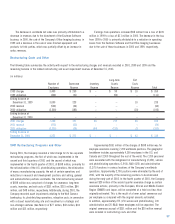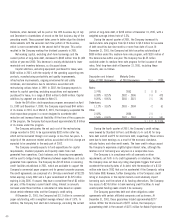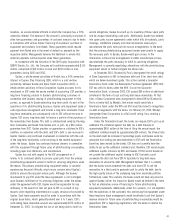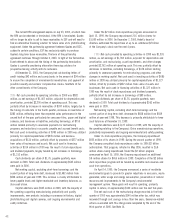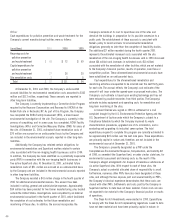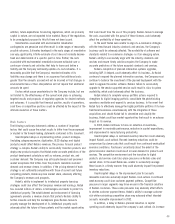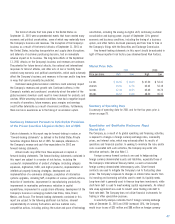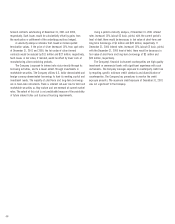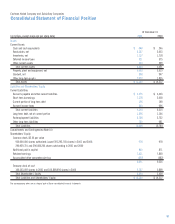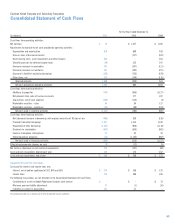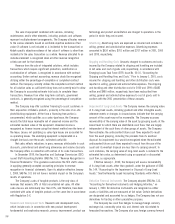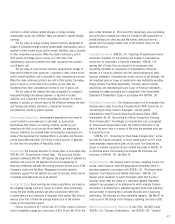Kodak 2001 Annual Report Download - page 49
Download and view the complete annual report
Please find page 49 of the 2001 Kodak annual report below. You can navigate through the pages in the report by either clicking on the pages listed below, or by using the keyword search tool below to find specific information within the annual report.
47
The terrorist attacks that took place in the United States on
September 11, 2001 were unprecedented events that have created many
economic and political uncertainties, some of which may materially harm
the Company’s business and revenues. The disruption of the Company’s
business as a result of the terrorist attacks of September 11, 2001 on
the United States, including transportation and supply chain disruptions
and deferrals of customer purchasing decisions, had an immediate
adverse impact on its business. The long-term effects of the September
11, 2001 attacks on the Company’s business and revenues are unknown.
The potential for future terrorist attacks, the national and international
responses to terrorist attacks, and other acts of war or hostility have
created many economic and political uncertainties, which could adversely
affect the Company’s business and revenues in the near and/or long term
in ways that cannot presently be predicted.
Continued weak global economic conditions could adversely impact
the Company’s revenues and growth rate. Continued softness in the
Company’s markets and purchasers’ uncertainty about the extent of the
global economic downturn could result in lower demand for products and
services. While worsening economic conditions have had a negative impact
on results of operations, future revenues, gross margins and earnings
could further deteriorate as a result of economic conditions. Furthermore,
there can be no assurances as to the timing of an economic upturn.
Cautionary Statement Pursuant to Safe Harbor Provisions
of the Private Securities Litigation Reform Act of 1995
Certain statements in this report may be forward-looking in nature, or
“forward-looking statements” as defined in the United States Private
Securities Litigation Reform Act of 1995. For example, references to
the Company’s revenue and cash flow expectations for 2002 are
forward-looking statements.
Actual results may differ from those expressed or implied in
forward-looking statements. The forward-looking statements contained in
this report are subject to a number of risk factors, including the
successful: implementation of product strategies (including category
expansion, digitization, OLED, and digital products); implementation of
intellectual property licensing strategies; development and
implementation of e-commerce strategies; completion of information
systems upgrades, including SAP; completion of various portfolio actions;
reduction of inventories; improvement in manufacturing productivity;
improvement in receivables performance; reduction in capital
expenditures; improvement in supply chain efficiency; development of the
Company’s business in emerging markets like China, India, Brazil,
Mexico, and Russia. The forward-looking statements contained in this
report are subject to the following additional risk factors: inherent
unpredictability of currency fluctuations and raw material costs;
competitive actions, including pricing; the nature and pace of technology
substitution, including the analog-to-digital shift; continuing customer
consolidation and buying power; impact of September 11th; general
economic and business conditions, including the timing of a business
upturn; and other factors disclosed previously and from time to time in
the Company’s filings with the Securities and Exchange Commission.
Any forward-looking statements in this report should be evaluated in
light of these important risk factors (see aforementioned Risk Factors).
Market Price Data
2001 2000
Price per share: High Low High Low
1st Qtr. $46.65 $ 38.19 $67.50 $ 53.31
2nd Qtr. 49.95 37.76 63.63 53.19
3rd Qtr. 47.38 30.75 65.69 39.75
4th Qtr. 36.10 24.40 48.50 35.31
Summary of Operating Data
A summary of operating data for 2001 and for the four years prior is
shown on page 78.
Quantitative and Qualitative Disclosures About
Market Risk
The Company, as a result of its global operating and financing activities,
is exposed to changes in foreign currency exchange rates, commodity
prices, and interest rates, which may adversely affect its results of
operations and financial position. In seeking to minimize the risks and/or
costs associated with such activities, the Company may enter into
derivative contracts. See also Note 11.
Foreign currency forward contracts are used to hedge existing
foreign currency denominated assets and liabilities, especially those of
the Company’s International Treasury Center, as well as forecasted
foreign currency denominated intercompany sales. Silver forward
contracts are used to mitigate the Company’s risk to fluctuating silver
prices. The Company’s exposure to changes in interest rates results from
its investing and borrowing activities used to meet its liquidity needs.
Long-term debt is generally used to finance long-term investments, while
short-term debt is used to meet working capital requirements. An interest
rate swap agreement was used to convert some floating-rate debt to
fixed-rate debt. The Company does not utilize financial instruments for
trading or other speculative purposes.
A sensitivity analysis indicates that if foreign currency exchange
rates at December 31, 2001 and 2000 increased 10%, the Company
would incur losses of $25 million and $88 million on foreign currency


